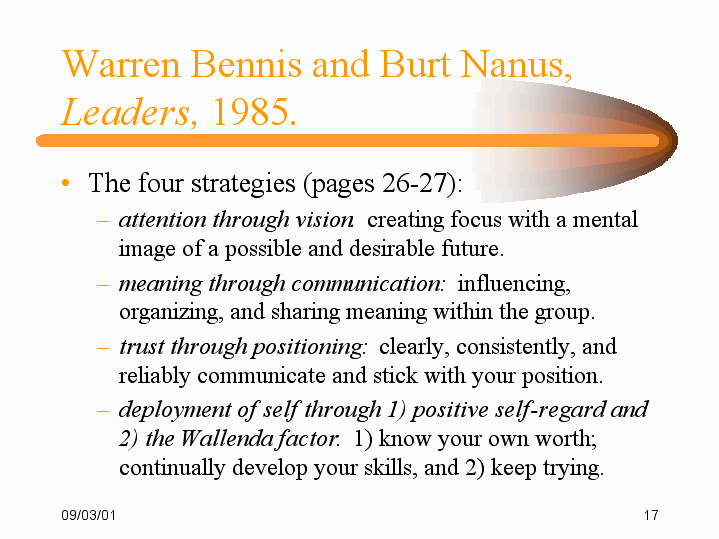Slide 17 of 28
Notes:
Re: strategy one -- “Leaders are the most results-oriented individuals in the world, and results get attention. Their visions or intentions are compelling and pull people toward them. Intensity coupled with commitment is magnetic. And these intense personalities do not have to coerce people to pay attention; they are so intent on what they are doing that, …they draw others in.” (page 28)
Re: strategy two -- “The actions and symbols of leadership frame and mobilize meaning. Leaders articulate and define what has previously remained implicit or unsaid; then they invent images, metaphors, and models that provide a focus for new attention. …an essential factor in leadership is the capacity to influence and organize meaning for the members of the organization.” (page 39)
Re: strategy three -- “Leaders acquire and wear their visions like clothes. Accordingly, they seem to enroll themselves…in the belief of their ideals as attainable, and their behavior exemplifies the ideas in action.” (page 46)
Re: strategy four -- Positive self regard “consists of three components: knowledge of one’s strengths, the capacity to nurture and develop those strengths, and the ability to discern the fit between one’s strengths and weaknesses and the organization’s needs.” (pages 61-62) Positive regard for self creates positive regard for others. The Wallenda factor: successful leaders focus on trying and learning, not on failing or avoiding failure.















